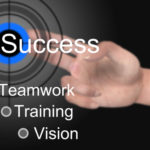Change Acceleration
Accredited Consulting Service for Ms. Szpakowski MBA BA Accredited Senior Consultant (ASC)
The Appleton Greene Accredited Consultant Service (ACS) for Change Acceleration is provided by Ms. Szpakowski and provides clients with four cost-effective and time-effective professional consultant solutions, enabling clients to engage professional support over a sustainable period of time, while being able to manage consultancy costs within a clearly defined monthly budget. All service contracts are for a fixed period of 12 months and are renewable annually by mutual agreement. Services can be upgraded at any time, subject to individual client requirements and consulting service availability. If you would like to place an order for the Appleton Greene Change Acceleration service, please click on either the Bronze, Silver, Gold, or Platinum service boxes below in order to access the respective application forms. A detailed information guide for this service is provided below and you can access this guide by scrolling down and clicking on the tabs beneath the service order application forms.
Client Telephone Conference (CTC)
If you have any questions or if you would like to arrange a Client Telephone Conference (CTC) to discuss this particular Unique Consulting Service Proposition (UCSP) in more detail, please CLICK HERE.
Bronze Client Service
Monthly cost: USD $1,500.00
Time limit: 5 hours per month
Contract period: 12 months
SERVICE FEATURES
Bronze service includes:
01. Email support
02. Telephone support
03. Questions & answers
04. Professional advice
05. Communication management
To apply – CLICK HERE

Silver Client Service
Monthly cost: USD $3,000.00
Time limit: 10 hours per month
Contract period: 12 months
SERVICE FEATURES
Bronze service plus
01. Research analysis
02. Management analysis
03. Performance analysis
04. Business process analysis
05. Training analysis
To apply – CLICK HERE
Gold Client Service
Monthly cost: USD $4,500.00
Time limit: 15 hours per month
Contract period: 12 months
SERVICE FEATURES
Bronze/Silver service plus
01. Management interviews
02. Evaluation and assessment
03. Performance improvement
04. Business process improvement
05. Management training
To apply – CLICK HERE
Consultant profile
Ms Szpakowski is an approved Senior Consultant at Appleton Greene and she has experience in management, customer service and production. She has achieved a Master of Business Administration, a Bachelor in Applied Economics and is a Certified Change Management Professional. She has industry experience within the following sectors: Insurance; Banking & Financial Services; Consultancy; Technology and Biotechnology. She has had commercial experience within the following countries: United States of America; Canada and Switzerland, or more specifically within the following cities: New York NY; Chicago IL; Toronto; Montreal and Zurich. Her personal achievements include: instituted change management mindset; reduced waste and rework; improved sales performance; embedded lean thinking and improved workflows. Her service skills incorporate: change management; performance consulting; project management; lean management and instructional design.
To request further information about Ms. Szpakowski through Appleton Greene, please CLICK HERE.
Executive summary
Change Acceleration
We are living in a world of continuous change. The time between breakthrough technologies is shorter and shorter. From typewriter to the personal computer to the iPhone, the pace of change is accelerating. Some futurists predict that by 2020 the smart phone will have been replaced. Robotics are replacing workers. Although the pace of change seems fast today, tomorrow we will look back and reflect that the pace of change then was slow. The skills of today will not be sufficient for tomorrow. As organizations we must become flexible, agile, fast learners and accept that what is good enough today may not be so tomorrow.
There are several dimensions to accelerated change. Organizations need to understand their core mission and be ready and flexible to identify different ways of achieving that mission. The what the organization ultimately needs to achieve may stay the same, but the how the organization will achieve this may need to change to be relevant and effective in an ever-changing marketplace. This means that things need to be done differently’ Moving to the new requires looking Aa The future, comparing to the present and identifying the transformation required at the macro level and the supporting initiatives at the micro level that will be required to close the ap. These initiatives require shifts in mindset, sometimes changes in culture and more often than not, changes in people, processes, technologies, and capabilities. This requires not only performance consulting skills to identify the gaps, but also project management, lean skills, and rapid results focus to ensure the right projects are innovative and are run effectively and efficiently. Strong change management skills are required to ensure the people side of change is being addressed.
A commonly referenced statistic states that 70% of change projects fail. There are three components required for successful change to be implemented: leadership, project management and change. Often, we see strong project management and leadership sponsorship and support but not enough attention to the people side of change. Understanding that the natural tendency to change is resistance (even when the change is desired), it is important to focus on this early and often. Organizational change can only happen when individuals change. Sometimes there is strong project and change management, but leadership is not actively and visibly sponsoring and engaged in the change. Leaders are critical in modeling the way for behavioral changes and shaping the culture needed to optimize the changes. Leaders want to do the right thing, but may need help and coaching to do the right thing. And finally, having strong leadership and change management is not enough if the project is not well scoped, designed, managed, and executed. Ms. Szpakowski has spent the last 20+ years focused on all aspects of change acceleration including performance consulting, project management, lean management, rapid results focus, change management, communications, coaching and training and is one of the 1st Certified Change Management Professionals (CCMPTM) in this newly recognized profession.
Service Methodology
Every change initiative starts with discovery and identification of changes needed. The gap analysis should start with the desired future state, then looking at current state, and identifying the gap between the two. Starting with a current state analysis often grounds the participants in what they are currently doing, keeps them in their comfort zone, and creates a focus on how to correct and improve what is currently being done rather than questioning and challenging. By starting with a future state analysis, the conversation is lifted away from today and creates more energy and optimism towards innovations, towards future results doing things differently. The current state is then viewed through the lens of the future rather than the past. For many this is counter-intuitive but the results are dramatically different. This gap analysis can be conducted using lean methodologies to ensure the right people are involved, that there is a strong customer focus, and that both data and team knowledge is mobilized to improve decision making. Selecting the right change initiative is a critical step.
Once the change has been identified, leaders and project/change team members need to be identified and sourced and plans need to be developed. The change project can be implemented as a linear project over several months (or years) with detailed project, change plans and regular sponsor engagement check-ins. Another approach can be driven by a series of short 90 day rapid result initiatives during which small teams articulate clear 90 day focused stretch goals, do whatever it takes to achieve these results, step back to reflect on what was learned, and institutionalize to a broader audience. This is a rapid, iterative, energizing approach that unleashes creativity and innovation.
Either approach requires appropriate change management methodologies which can include visioning, change impact assessment and stakeholder mapping, communications, engagement planning, training, sponsor roadmap, and post implementation measurements. Project management will measure whether the project was done on time, within budget and within scope – Change management will measure whether the desired changes are being implemented by the people and measure the results driven by these changes. Training is a critical component of change management. People need to know how to implement the changes and must be enabled to make the changes. People learn in many different ways. Training is not limited to classroom face-face training but can include job-aids, coaching, performance support tools and front line manager support. Instructional design, action learning and using Adult Learning Principles is critical. People may know how to do the changes but, at the end of the day, if they are not held accountable, if their direct managers do not reinforce the new behaviors, change will fail. That’s why having the right project management, leadership and change management is important and must start early in the life-cycle of the change. Accelerating change requires a multi-dimensional customized approach that follows strict project and change management principles, tools, methodologies and process.
Service Options
Companies can elect whether they just require Appleton Greene for advice and support with the Bronze Client Service, for research and performance analysis with the Silver Client Service, for facilitating departmental workshops with the Gold Client Service, or for complete process planning, development, implementation, management and review, with the Platinum Client Service. Ultimately, there is a service to suit every situation and every budget and clients can elect to either upgrade or downgrade from one service to another as and when required, providing complete flexibility in order to ensure that the right level of support is available over a sustainable period of time, enabling the organization to compensate for any prescriptive or emergent changes relating to: Customer Service; E-business; Finance; Globalization; Human Resources; Information Technology; Legal; Management; Marketing; or Production.
Service Mission
My intent is to partner with you to help your organization be the best it can be in areas you have identified as high priority strategic change imperatives. I bring to that challenge more than 20 years experience in organizational development, project management, change management, performance consulting, lean, and training & development. I have led multiple change projects and am experienced in driving all aspects of the change life-cycle from visioning, change impact assessment and stakeholder mapping, though communications, and engagement planning, training, sponsor roadmap, and post implementation measurements and have been instrumental in developing an enterprise-wide view of change. While specific projects may not, by themselves, have big change impacts on the target audience, in the aggregate, the amount of change may lead to change saturation and burn out. Both a project view of change and an enterprise view of change need to be effectively managed to ensure maximum results. I have experience in taking a global, diverse organization from point A to Z, from where no conscious awareness or knowledge of ‘change management’ exists to where, no project, big or small, moves forward without consideration of people impacts. Change is now part of the DNA and has become “the way we do things here”.
I strongly believe that the people impacted, the subject matter experts, be involved in designing, developing and implementing the changes. This creates ownership, engagement and buy-in from the start. The people in the trenches know the business, they have the answers within them. My job is to pull out the knowledge and ideas they have, that they may not even know they have. This takes strong communication and team process facilitation skills – I have been able to do this successfully at multiple levels within the organization and across multiple cultures. Constraints and challenges bring creativity and innovation. My philosophy is to believe that even if we do not have the answer to the challenge at this moment, there is a way to overcome the challenge and we need to persevere. If the answer were simple, we would already be doing it. Troubleshooting and developing creative results-based solutions to business challenges is a critical component of the work I could do for your organization.
Change implies doing things differently which means people need to learn a new way of doing. We know that people are social beings and learn better together. We know that manager coaching is critical to reinforce behavior change and skill development. Yet there is little appetite for taking ‘time out’ to attend training, limited resources are made available to deliver training and e-learning is used to replace face-face training. To address these issues, we have to be creative and think outside the box. WinLabs and LearningLabs are 2 examples of learning interventions I have designed to address the need for action learning and just-in-time in-the-flow of work training.
Service objectives
The following list represents the Key Service Objectives (KSO) for the Appleton Greene Change Acceleration service.
- Change Management
Organizational change starts at the individual level. For the organization to change, the individuals must be Aware of the need for the change, have a Desire the change, gain the Knowledge to implement the change, be Able to do the change, and finally they need the Reinforcement to sustain the change. On a project basis, change management means effectively executing all aspects of the change life-cycle from visioning, change impact assessment and stakeholder mapping, though communications, and engagement planning, training, resistance management, sponsor roadmap, and post implementation measurement. At the enterprise level, all changes impacting a specific target audience need to be brought together to maximize change resiliency and minimize change saturation and burnout. - Rapid Results Initiatives
The power of a rapid results project is the energy, creativity, and breakthrough thinking that is unleashed when a small group of people are challenged and empowered to identify, plan, and deliver a 90-100 day result. The focus is on the results rather than activities. The group does whatever it takes to achieve the result, reflects back on what worked well and what didn’t, best practices are identified, and learnings are shared with the broader group. A rapid results project involves a 4 step process. 1) Sponsors to set the challenge, identify key team members and commit to removing obstacles and paving the way for the empowered team to achieve their results. 2) The core team analyzes appropriate data, develops a specific 90-day result goal, and creates a plan to deliver the result. This goal must be a stretch as that is what drives innovation and out-of-the box thinking. 3)The teams meet at least weekly to report on their progress and make any changes required, update sponsors on a monthly basis and, 4) at the end of the 90 day period, share results achieved and lessons learned. This is then expanded to a larger audience. - Capability Development
Capability development is about enabling learners to be able to do something differently. Developing training requires experience in all aspects of learning and development including the design, development and delivery of custom interventions utilizing adult learning principles and instructional design methodologies. During the design phase, a detailed needs analysis, by target audience, must first be conducted to understand the extent and diversity of the training that is required. Learning preference, geographic locations, availability of resources, cost, time and manager support are just a few of the elements that must be considered when designing the learning intervention. We know that 70% of training happens on the job, 20% through coaching and10% during the training event. A training plan must encompass all three elements. All impacted audiences need to buy-in and commit up front. Delivery of training needs to be interactive, engaging, appeal to the different learning styles and provide an opportunity to practice applying the knowledge to the task. Training should be delivered as much ‘just-in-time’ as possible and can be delivered face-to-face, virtually and on-line. The person delivering the training needs to have credibility in the eyes of the trainee: they can be the subject matter expert and they can be legitimized by the manager. The training can be several days so as to immerse the learners in the topic or iterative (several short sessions over an extended period of time). Post training is critical to ensure the ‘stickiness’ of the new skills. Multiple reinforcement mechanisms come into play: coaching. Job-aids, performance support tools. Post training measurement can include four levels: reaction, actual learning, behavior change and results. Training remediation needs to be implemented depending on the results of the post training measurements. - Performance Consulting
Performance consulting is the process of facilitating performance improvements. This can happen at all levels of the organization and requires a mind-set of ‘constructive discontent’. The premise is that perfection does not exist and there is always room for improvement. Performance improvement involves a series of steps including identification of business issues, gap analysis, root cause analysis development and selection of recommendations, implementation of performance improvement interventions and evaluation of results. Business issues are identified based on an assessment of current state against desired business goals. This assessment can include, but is not limited to a robust data analysis and focused interviews with key stakeholders. Given resource and time constraints, business issues can be prioritized based on an impact/effort assessment or based on such criteria as determined by senior management. The difference between desired state and current state is the gap that needs to be closed. The aim of structured problem solving is to implement solutions tackling the root cause of concerns rather than the symptoms, and test the solutions to validate if they have resolved the concern to the desired level. A root cause analysis (asking why, why, why) will ensure that the right issues are being addressed to close the performance gap. These issues can be categorized as people, technology, processes and environment. Appropriate corrective actions are designed and implemented. These actions can include new processes, up skilling employees, aligning reward & recognition programs, reorganization, new tools and new environment. Once the changes have been implemented, a new assessment and measurement need to take place to ensure that these actions and the changes have effectively been institutionalized, are sustainable and have closed the gap. This is now the new current state and the improvement process continues. - Lean Management
Lean is a philosophy, a mindset, and a method for continuous improvement that is supported by a set of specific processes, tools and methodologies. Lean is geared towards eliminating waste, improving efficiencies and is focused on quality, cost, delivery and staff improvement. One of the principles of Lean is that the people doing the work are best equipped to identify pain points and designing the fixes – those implementing the changes are designing the changes. This drives buy-in and engagement to the changes and minimizes resistance to change. Numerous Lean tools are used during the Lean life cycle of scope, diagnose, design, implement, manage & sustain. One of my favorite Lean tools is Kaizen. A Kaizen starts with a focused 3-5 day workshop to review a specific process and identify where improvements can be made and the implementation of the changes happens within a short window of 60-90 days. The workshop attendees are all stakeholders who play a role in the process. During the workshop, the current state and future state work flow is mapped out. Issues are identified, root causes are surfaced, solutions are designed, and prioritized and plans for implementation are developed. The implementation takes place over the next 60-90 days. The beauty of the Kaizen event is that during an intense few days, recommendations are developed, and plans are developed and the implementation of changes takes place within a relatively short span of time after the workshop. People see results quickly. The challenge of the Kaizen is to ensure that the right people are included in the workshop and that all relevant data analysis is available for the team to use during the event. Kaizens are best for incremental improvements and are not meant for large IT projects.
Testimonials
Zurich Insurance
“Ms. Szpakowski is a creative problem solver. She always brings new ideas to the table. Another strength is her collaborative and positive approach to daily tasks as well as long term projects. She is a great asset to any team. Ms. Szpakowski consistently delivers 100+%. She has a high level of expertise and knowledge in consulting and change/project management. Her behaviors are consistent with our core values and people enjoy working with her and seek her out. Ms. Szpakowski has helped significantly to build up our change program office. She brings in great experience and brilliant ideas. She’s an excellent team player, and even her being located in the US, it’s easy and open to work with you in a team. Ms. Szpakowski’s talents are vast. She has greatly impacted our organization’s ability to manage change, but also move forward with projects and initiatives effectively. She is a valued member of our organization and a sought-after resource by all that know her. She is a joy to work with and energizes all who interact with her.”
More detailed achievements, references and testimonials are confidentially available to clients upon request.
Industries
This service is primarily available to the following industry sectors:
Insurance
The Property and Casualty insurance industry is cyclical and profits are cyclical and highly volatile. This is driven by frequency and severity of catastrophes and competitive pressures on pricing. Recently insurance loses (catastrophe) have been low, there is an oversupply of capacity, and prices are competitive causing rates to decline. In the past, much of insurance profits came from investment returns not from underwriting results. Today investment returns are low and profits must come from underwriting. Insurance is a highly regulated industry. In the commercial and corporate P&C insurance markets, most insurance is not an option and is mandated and there is little differentiation amongst insurance carriers. The success of the insurance carrier comes from the portfolio of risks, the appetite for certain risks and not others and how much insurance the company keeps or reinsures. Where there is long tail business, it may be years before knowing whether a particular portfolio is profitable or not.
Claims costs are rising and the longer the duration of the claim, the more uncertainty as to final cost. Technology is already impacting the insurance industry as many of the processes can be automated and fewer employees will be required moving forward. The absolute growth in P&C insurance is not going to come from North America, as this is a mature market, growth will come from emerging markets. In North American, the focus is on keeping the share of the pie or growing the pie with new and innovative products. As we see an increase in types of risks (Cyber and climate), not all risks are insurable. A focus is then on understanding and mitigating the risk. So an insurance company may, in addition to focus on the transfer of risk, may also focus on awareness, understanding and mitigation of risk.
Banking and Financial Services
The banking industry is undergoing a huge transformation, much of it due to digital and mobile technologies. Although there are still many bank branch locations playing a vital role in customer acquisition and engagement with more complex transactions, much of banking is now done online with no physical interaction with a bank. Although fewer branches may be needed, the fewer branches will need to be full service with, for example, mortgage broker, businesses banker and wealth specialist available in one locations. The challenge is to select the right location for the full service bank to ensure that local customer needs are being met. At the same time, branches need to be more appealing to customers, stress more personalized service, and make better use of the footprint. Some have started creating social spaces with café style branches. Customer service will continue to be key differentiator for banks and ensuring employees have the requisite customer service skills will be critical.
It is now table stakes for a bank to be fully mobile enabled and even to act as a proactive adviser using push technology i.e. let the customer know when they are reaching their limits and when interest rates are going up or down. Interest rates have been low for many years – they are expected to rise in the near future. This means that competition for deposits will be more intense and loans may decrease. As banking fees are declining, banks need to become creative in revenue generating activities. Improved technology makes it easier to test and retest new programs products and services with segmented groups thus maximizing revenue from selected strategies. The changing demographics are also impacting the banking industry. Millennials today have access to more information than ever – this is an opportunity for banks to provide meaningful information readily accessible on digital media on their products. Millennials use less credit in general, want more transparency in fees, and are less loyal to one bank over another. Banks could encourage consolidation and provide incentives for loyalty.
Consultancy
Consulting has grown by about 8% since 2013 and while expecting to continue to grow, the consulting industry, not unlike other industries, is expected to change dramatically over the next few years. Consulting firms have been successful in the past partly because as expert advisors to large firms they need to stay abreast, if not be ahead, of the latest technologies and changes in the marketplace. Today clients expect faster delivery of services. Projects are shorter and consultants need to deliver tangible results at an accelerating pace. They need to have a deep understanding of not only their client’s issues, but also of their client’s clients. Increasingly transformations are global and enterprise-wide initiatives. This increases the scope, risk, politics, and impacts of the transformation and understanding and managing within regulatory constraints creates another level of complexity. Technical work, which traditionally brings in high revenue, will shrink and change. The work will move from technical implementations to business models, to focus on customer experience, analytics, and AI. As systems move into the cloud, there are fewer and fewer large re-engineering projects and fewer people will be required with coding and technical skills. Technical skills will no longer be sufficient – Consultants will also require greater knowledge of industry processes, agile methodologies, data analytics and customers. Virtual work, team-driven projects, and application of social media will change the way consultants work. Companies are asking not only ‘what can you do for me’ but ‘what can you leave behind so I can reuse and self-serve’. Multi-year projects are fewer and consulting assignments will be agile, collaborative and iterative. Smaller cross disciplinary teams require greater seniority and specialization, while activities need to be matched to the delivery mechanism. Delivery mechanisms can be through onsite teams, design/innovation centers, tele-presence and structured collaboration tools. Organizational change management is becoming more important as change is accelerating. There is a shift from fixing the problem to prevention and a focus on leading with change rather than managing the change.
Technology
Accelerating changes in technologies continue to impact not only the consumer, but increasingly industries are looking at technology to facilitate their transformations. Although somewhat slowing, employment in tech industries is still outpacing total employment growth in the US by two to one, providing about 12% of jobs while producing almost 23% of output. High tech employment has shifted from manufacturing to, today, more than 52.5% employment in services. AirBnB, Uber, Lyft are but a few of the companies whose very existence is predicated on technology. Technology is enabling a gig economy that facilitates more flexible, project based employment rather that company based employment.
There is a growing demand for robotics, virtual and augmented reality, and AI to impact workflow, processing and learning. 3-D printing is only in early stages of the impact it can have on manufacturing and custom design. More and more companies are asking for ‘pay-per-use’ or consumption based technologies. This allows the company to benefit from the latest technologies without the massive investment required to ‘own’ the technology. Regulations in many industries are becoming more complex, organizations will need the tools and resources to ensure compliance. The Internet of things and cloud computing are allowing small and mid-size companies to from sophisticated capabilities previously only available to the large organizations. Cloud computing in turn drives the need for cybersecurity. Because of the growing complexities of designing technology platforms, tech companies need to collaborate and create cross-industry partnerships. For example, the collaboration required to equip car manufacturers with self-driving functionality, services and features is best done through joint ventures between technology company and auto manufacturers. The need to be nimble also means that Technology companies are focusing on what they do best, leading to divesture from activities that are not their core and/or acquisitions to strengthen that core.
Locations
This service is primarily available within the following locations:
New York NY
New York City is the leading center for banking, finance, and communication in the US. Many of the large corporations have head offices in Manhattan and one out of every 10 private sector jobs is with a foreign company. New York’s economy is also grounded in the financial, high technology, real estate, insurance and health care industries. Manhattan is the leading financial center in the world, the wages from finance are responsible for more than 50% on the wages in Manhattan and one in six jobs. Information Technology is also a major player in downtown Manhattan (sometimes referred to as Silicone Alley) and recently more start-ups are popping up in Brooklyn. Health care and biomedical are also important focus areas with the highest numbers of post graduates in life science degrees in the US and over 120 Nobel laureates coming out of local institutions. New York City is also major center for arts, media, journalism, and publishing – a center for creativity with a growing number of jobs in digital media, advertising, fashion, design and architecture. It is a fast paced environment and perception is that ‘if you can make it in New York, you can make it anywhere’. The best want to work with the best so New York attracts the best talent. Real estate costs are very high and some industries are moving work outside of Manhattan, to suburbs and other regions where real estate per square footage is lower. In addition, collaborative technologies available today are enabling workers to work efficiently from anywhere, allowing them to work virtually. Although headquarters will remain in the downtown areas, more and more employees will be working virtually. Housing costs and cost of living can also be a negative factor for hiring talent. The opportunity to work virtually removes this concern and allows New York based companies to hire the best without the negative impacts of high cost of living.
Chicago IL
Chicago and its suburbs is home to 29 fortune 500 companies and is a major transportation and distributions center. The cost of living in Chicago is higher than the national average with Gentrification and home price increases in the Chicago metropolitan area. Although there has been a central downtown resurgence in recent year with construction of major new condos and office buildings, the population in the city has been on a steady decline. As a sanctuary city, Chicago has a large immigrant population. The immigrants come from all over the world, including Poland, Mexico, India, the former Soviet Union, the Philippines, and China. Despite fears that low-skilled immigrants would not be assimilated into an increasingly high-tech economy, local analysts say the newcomers are following the success track of earlier groups, working their way into the middle class after performing service and laboring jobs. This is minimizing the population decrease. Chicago’s unemployment rate exceeds the national average. The loss of jobs for both unskilled and college-educated workers can be attributed to the Internet bust, an ailing economy, plant closings, and the relocation of companies once headquartered in Chicago. However, the unemployment rate seems to be on a decline. Chicago’s diversified economy is based on manufacturing, printing and publishing, finance and insurance, and food processing (the city is still considered the nation’s “candy capital”) as primary sectors. A substantial industrial base and a major inland port contribute to the city’s position as a national transportation and distribution center. The source of nationally distributed magazines, catalogues, educational materials, encyclopaedias, and specialized publications, Chicago ranks second only to New York in the publishing industry.
Toronto CA
Toronto is the Largest city in Canada and contributes to 20% national GDP and is a commercial, distribution, financial and industrial center. Toronto has 3rd largest stock exchange in the Americas by market cap and 9th in the world and is the fastest growing financial center in NA, after new York City and Chicago. Metropolitan Toronto produces more than 50% of Canada’s manufactured goods – a large proportion of which is moving out to suburbs. Toronto today is moving more into service-based industry and is today the center of Anglophone media industry, advertising industry, entertainment industry, fashion industry, and retail. Toronto enjoys a strong tourism industry. Film and television are big industry due to lower cost of production. The province of Ontario benefits for a wealth of raw materials and hydroelectric power and Toronto is the home for many headquarters of companies that have their primary activities elsewhere, i.e. mining, real estate, which need to stay close to finance center. Toronto is also an important site for computer software development. The low Canadian dollar and the stability of Canada make Toronto a real estate haven with much foreign investment. The condo market is booming, real estate cost are skyrocketing and there is construction everywhere in downtown Toronto. Note that Canadian English spelling different than American.
Montreal CA
Montreal has the 2nd largest economy in Canada. Industries include aerospace, electronic goods, software engineering, telecommunications, pharmaceuticals, textile and apparel manufacturing, tobacco and transportation. The pharmaceutical industry is very important – a conscious effort in the 80’s focused on creating incentives to bring in pharmaceuticals. Montreal also has a growing video game industry. The winters are long and hard so people are anxious for the summer and there are numerous outdoor cultural and music festivals throughout the summer months. Montreal is a very creative and vibrant cultural center and its design community is recognized as one of three design capitals in the world (after Berlin and Buenos Aires). The architecture and cityscapes, as well as the low Canadian dollar, are drivers for a robust film and movie industry. Montreal is bilingual with French first. This means that all business signage, advertising, internet postings, etc. must be, at minimum in French. There are mainly 2 seasons: winter from October to April and summer from May to September.
Zurich CH
Zurich is a leading global city and is among the world’s largest financial centers despite a relatively small population. The stock exchange is the 4th largest in the world and is the 6th most expensive city in the world. 31% of the population are non-Swiss citizens and nearly 4/5 workers in service industry. In 2012, Zurich was named top city for ‘quality of life’. The high quality of life is a key reason for economic growth. Zurich has strong investments in education providing skilled labor at all levels. Professional training includes both practical experience and academic learning providing good general education and language skills. This creates multilingual people with generally high motivations and high level of productivity – driving opening of offices and research centers by large corporations. Although the main language in Zurich is a Swiss dialect of German, the business language is English and it is expected that business people are able to do business in English.
Clients
This service’s current clients or employers include:
Zurich Insurance
Zurich Insurance Group (Zurich) is a leading multi-line insurer that serves its customers in global and local markets. With about 54,000 employees, it provides a wide range of property and casualty, and life insurance products and services in more than 210 countries and territories. Zurich’s customers include individuals, small businesses, and mid-sized and large companies, as well as multinational corporations. The Group is headquartered in Zurich, Switzerland, where it was founded in 1872. In North America, Zurich is a leading commercial property-casualty insurance provider serving the global corporate, large corporate, middle market, specialties and programs sectors. It also serves life customers in the retail, affluent and corporate markets. Our heritage is about helping customers understand and protect themselves from risk. Since 1872 we have been applying our expertise and experience so that our customers can have the very best protection for the things they value. This is our mission and the timeless idea behind our brand. It is also the authentic truth that has been and always will be at the heart of the Zurich brand.
UNUM Insurance
For more than 37 years, Unum has been the leading provider of group disability benefits in the U.S., providing crucial income when people can’t work because of injury or illness. Unum is also a leading provider of voluntary benefits in the country, offering a variety of valuable, affordable benefits that help protect the financial foundations of millions of U.S. workers. But our products and services are about more than just financial protection. We help businesses support a healthy, engaged workforce and find smart ways to attract and retain valuable employees. We help individuals protect their ability to earn a living and support them in their safe return to work. At Unum, we’re in the business of helping people through difficult times in their lives. Our financial protection benefits provide individuals and their families with the financial security they need to better cope with the loss of a loved one or the inability to work due to illness or injury. We offer a full array of benefits solutions – including education, enrollment services and valuable claim support – to meet the needs of both employers and their workers. And our award-winning absence management and vocational rehabilitation services help ease the disruption to both businesses and employers by enabling them to return to full capacity as soon as they are able. Unum’s four distinct , but similarly focused businesses – Unum US, Unum UK, Colonial Life, and Starmount Life – are each a market leader in making disability, life, accident, critical illness, dental and vision insurance accessible in the workplace. Our customers know they can count on Unum when the unexpected occurs. 33 million people at 181,000 companies rely on Unum’s products and services – including a third of Fortune 500 companies – and we paid out more than $6.8 billion in benefits last year to individuals and families who were impacted by life-changing events.
Merit Multi-Dimensional Training
Although this company does not exist today, I worked with Merit Multi-Dimensional Training as a management consultant from 1991 through 1998. The company provided consulting services in performance improvement and organizational development to a wide variety of industries including large implementations in Teamwork and Customer Service for multi-nationals in telecommunications, pharma and medical fields. The company was focused on working very closely and in-depth with a few large multi-national companies specializing in teamwork, sales training, communication skills, presentations skills, management development, and customer service skills. Depending on the needs of the organization, Merit partnered with recognized learning providers or defined, developed and delivered bespoke programs. As an organizational development consultant, I built and supported a high performance team-based organization at a multi-national telecommunications company and designed, developed and a customer service unit in four countries including a certification program for all Customer Service Representatives. As a professional facilitator, I provided training and coaching to companies in Canada and the US and as a program designer, created unique, custom-designed programs for diverse clients.
Dale Carnegie Training
Founded in 1912, Dale Carnegie Training has evolved from one man’s belief in the power of self-improvement to a performance-based training company with offices worldwide. We focus on giving people in business the opportunity to sharpen their skills and improve their performance in order to build positive, steady, and profitable results. Dale Carnegie’s original body of knowledge has been constantly updated, expanded and refined through nearly a century’s worth of real-life business experiences. The franchisees around the world (190+) use their training and consulting services with companies of all sizes in all business segments to increase knowledge and performance. The result of this collective, global experience is an expanding reservoir of business acumen that our clients rely on to drive business results. Headquartered in Hauppauge, New York, Dale Carnegie Training is represented in all 50 of the United States and over 90 countries. More than 2700 trainers present Dale Carnegie Training programs in more than 25 languages. Dale Carnegie Training is dedicated to serving the business community worldwide. In fact, approximately 8 million people have completed Dale Carnegie Training. Dale Carnegie Training emphasizes practical principles and processes by designing programs that offer people the knowledge, skills and practices they need to add value to the business. Connecting proven solutions with real-world challenges, Dale Carnegie Training is recognized internationally as the leader in bringing out the best in people.
Dale Carnegie Training – Click Here
Benefits
Management
- Performance improvement
- Process improvement
- Problem solving
- Creative thinking
- Leadership development
- Change readiness
- Change resiliency
- Increased sales
- Increased collaboration
- Strategic thinking
Customer Service
- Customer retention
- Customer satisfaction
- Customer acquisition
- Process improvement
- Increased quality
- Reduced rework
- Improved efficiency
- Can-Do attitude
- Relationship management
- Improved responsiveness
Human Resources
- Employee engagement
- Employee upskill
- Corporate effectiveness
- Organizational efficiency
- Employee retention
- Innovative solutions
- On-Boarding
- Culture of success
- Breakthrough thinking
- Execution mindset
Bronze Service
Monthly cost: USD $1,500.00
Time limit: 5 hours per month
Contract period: 12 months
Bronze service includes:
01. Email support
02. Telephone support
03. Questions & answers
04. Professional advice
05. Communication management
SERVICE DESCRIPTION
The Bronze Client Service (BCS) for Change Acceleration provides clients with an entry level option and enables client contacts to become personally acquainted with Ms. Szpakowski over a sustainable period of time. We suggest that clients allocate up to a maximum of 5 Key Employees for this service. Your Key Employees can then contact the consultant via email, whenever they feel that they need specific advice or support in relation to the consultant’s specialist subject. The consultant will also be proactive about opening and maintaining communications with your Key Employees. Your Key Employees can list and number any questions that they would like to ask and they will then receive specific answers to each and every query that they may have. Your Key Employees can then retain these communications on file for future reference. General support inquiries will usually receive replies within 48 hours, but please allow a period of up to 10 business days during busy periods. The Bronze Client Service (BCS) enables your Key Employees to get to know their designated Appleton Greene consultant and to benefit from the consultant’s specialist skills, knowledge and experience.
Silver Service
Monthly cost: USD $3,000.00
Time limit: 10 hours per month
Contract period: 12 months
Bronze service plus
01. Research analysis
02. Management analysis
03. Performance analysis
04. Business process analysis
05. Training analysis
SERVICE DESCRIPTION
The Silver Client Service (SCS) for Change Acceleration provides more time for research and development. If you require Ms. Szpakowski to undertake research on your behalf, or on behalf of your Key Employees, then this would understandably require more time and the Silver Client Service (SCS) accommodates this. For example, you may want your consultant to undertake some research into your management, performance, business, or training processes, with a view towards providing an independent analysis and recommendations for improvement. If any research and development, or business analysis is required, then the Silver Client Service (SCS) is for you.
Gold Service
Monthly cost: USD $4,500.00
Time limit: 15 hours per month
Contract period: 12 months
Bronze/Silver service plus
01. Management interviews
02. Evaluation and assessment
03. Performance improvement
04. Business process improvement
05. Management training
SERVICE DESCRIPTION
The Gold Client Service (GCS) for Change Acceleration is intended for more detailed evaluation and assessment, that may require your Key Employees to have monthly meetings or interviews with Ms. Szpakowski. These meetings and interviews can be conducted over the telephone, Skype, or by video conference if required. The consultant can also attend your business premises, an Appleton Greene office, or another mutually beneficial location, but please note that clients are responsible for the costs of any disbursements separately, including travel and accommodation. This service enables you to integrate the specific skills, knowledge and experience of your designated consultant into your Key Employee management team. The Gold Client Service (GCS) can also incorporate training workshops, business presentations and external meetings with customers, suppliers, associations, or any other business-related stakeholders.
Platinum Service
Monthly cost: USD $6,000.00
Time limit: 20 hours per month
Contract period: 12 months
Bronze/Silver/Gold service plus
01. Project planning
02. Project development
03. Project implementation
04. Project management
05. Project review
SERVICE DESCRIPTION
The Platinum Client Service (PCS) for Change Acceleration is our flagship service and will be required if you need Ms. Szpakowski to facilitate the planning, development, implementation, management, or review of a particular project relating to his specialist subject, which would obviously require more time and dedication. This service enables you to reserve up to 12.5% of the consultant’s working month and provides a more hands-on service as and when required. If you need more time than this, then this can always be arranged, subject of course to the consultant’s ongoing availability. The benefit of having an external consultant involved in projects is they provide an independent perspective and are not influenced by internal politics, day-to-day responsibilities, or personal career interest. They provide objectivity, specific knowledge, skills and experience and will be entirely focused upon the tasks at hand. The Platinum Client Service (PCS) will provide your organization with a valuable resource as and when you need it.


































